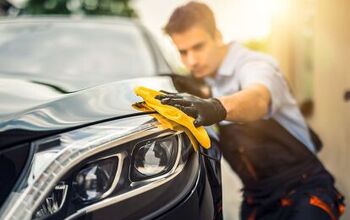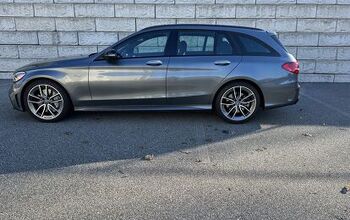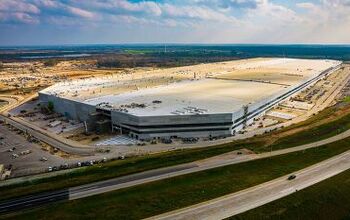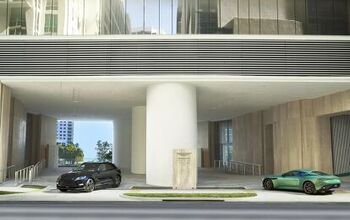Repair Estimates For Tesla Model S Higher At Certified Shops
No matter how minor or major an accident, Tesla Model S owners and their insurers will feel the financial pain from Tesla’s certified shops.
According to Green Car Reports, the EV’s nearly all-aluminum frame and body panels make repair work on even a minor fender-bender difficult, though that is only half of the story. Reported estimates from Tesla’s certified shops include:
- $10,000 to repair a “minor but long” scratch
- $45,000 for “minor front-end damage”
- $7,000 for repair of a small dent and scratch that required no replacement of parts
- $30,000 for “minor fender and door damage”
- $11,000 for a minor scrape on the rear panel, including a $155 charge to “ensure battery remains charged” during the repair
As aluminum “has no memory,” per Peotter’s Body Shop owner Larry Peotter, repairing a Model S is much harder than a vehicle with steel components. Rivets and bonding agents made specifically for use with the metal also add to both time and labor. Authorized shops also pass the costs associated with Tesla’s repair training program — with equipment and tools worth $100,000 alone — to their customers, though Peotter didn’t say by how much.
Though insurance pays for these costs, Model S owners — especially those who never owned a premium vehicle before — are still finding these prices hard to swallow. Some owners have gone as far as to take their vehicle to non-Tesla certified shops experienced with aluminum, coming away with estimates some two-thirds less than what they were charged at Tesla-approved businesses. On the other hand, Tesla won’t sell parts to any shop other than those it trained.
Seattle-based writer, blogger, and photographer for many a publication. Born in Louisville. Raised in Kansas. Where I lay my head is home.
More by Cameron Aubernon


































Comments
Join the conversation
Mark my words; buyers of the new Ford F Series pickup are going to be in shock when they discover the true, full cost of (a) repair work (even minor) to their trucks as a result of scratches, dings, dents & accidents, and (b) the inevitable higher than than average auto insurance premiums necessitated by high cost of such repair work. Automotive News reported that there was a near Ford Dealership mutiny that required the intervention of some very senior Ford Executives because Ford Dealerships were being required to expend huge sums of $$$ to upgrade their paint/body shops to prepare to work on the aluminum body panels on damaged F Series pickups, and also because they were having major difficulty hiring techs with the appropriate level of training & experience to perform body work on such animals. Ford ended up having to subsidize a huge % of the costs of the dealership body shop equipment acquisition costs, and implement a program to provide assurances there'd be sufficient numbers of skilled technicians able to perform such body work to quell such concerns (for now). It's a good thing that alleged 700 pounds in weight savings produced such dramatic fuel economy increases (NOT).
If it really costs $100,000 to set up a Tesla repair facility, then that would explain the charges. There aren't that many Teslas on the road, therefore there aren't many of them that need body work. The repair shops have to recoup their initial investment -- it's not as if they're part of a charity repair network, and there aren't going to be that many customers who can help them to recover those costs.
The drive-train in the electric B-Class is all Tesla. I was shocked to find out that there is no manual high voltage disconnect. There is a diagnosis wire that runs near all the high voltage lines. If that is broken it's supposed to disconnect the contacter and therefore the battery. However, it's apparently common in accidents for this system to fail, and stay on. If this happens. The battery system has to be powered down by a Tesla specialist who wears a linesman suit while disconnecting the still live cables.
Yup, it does cost more than some other cars. I had to pay a good amount to replace a rear quarter panel recently. But, at the end, I got a shiny solid Tesla back.